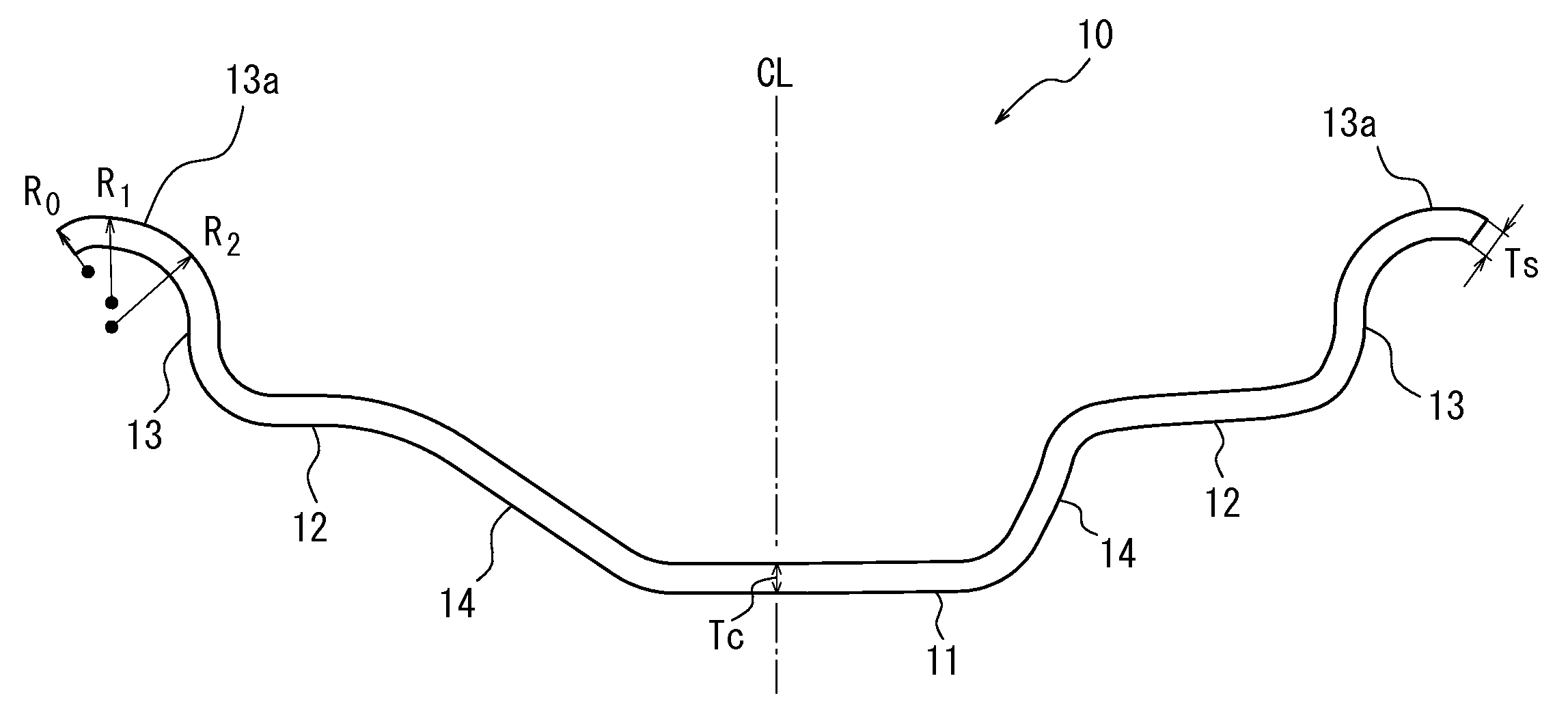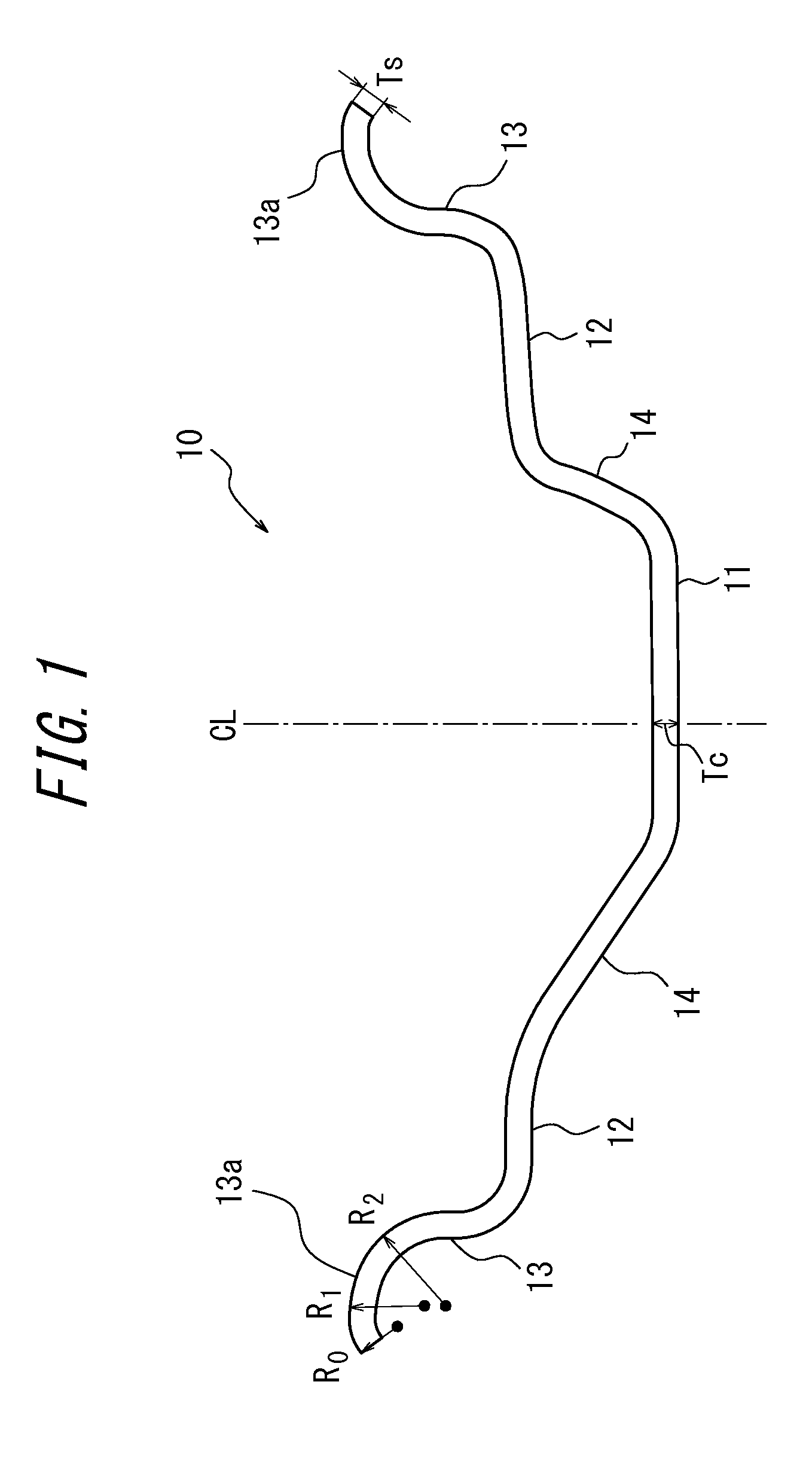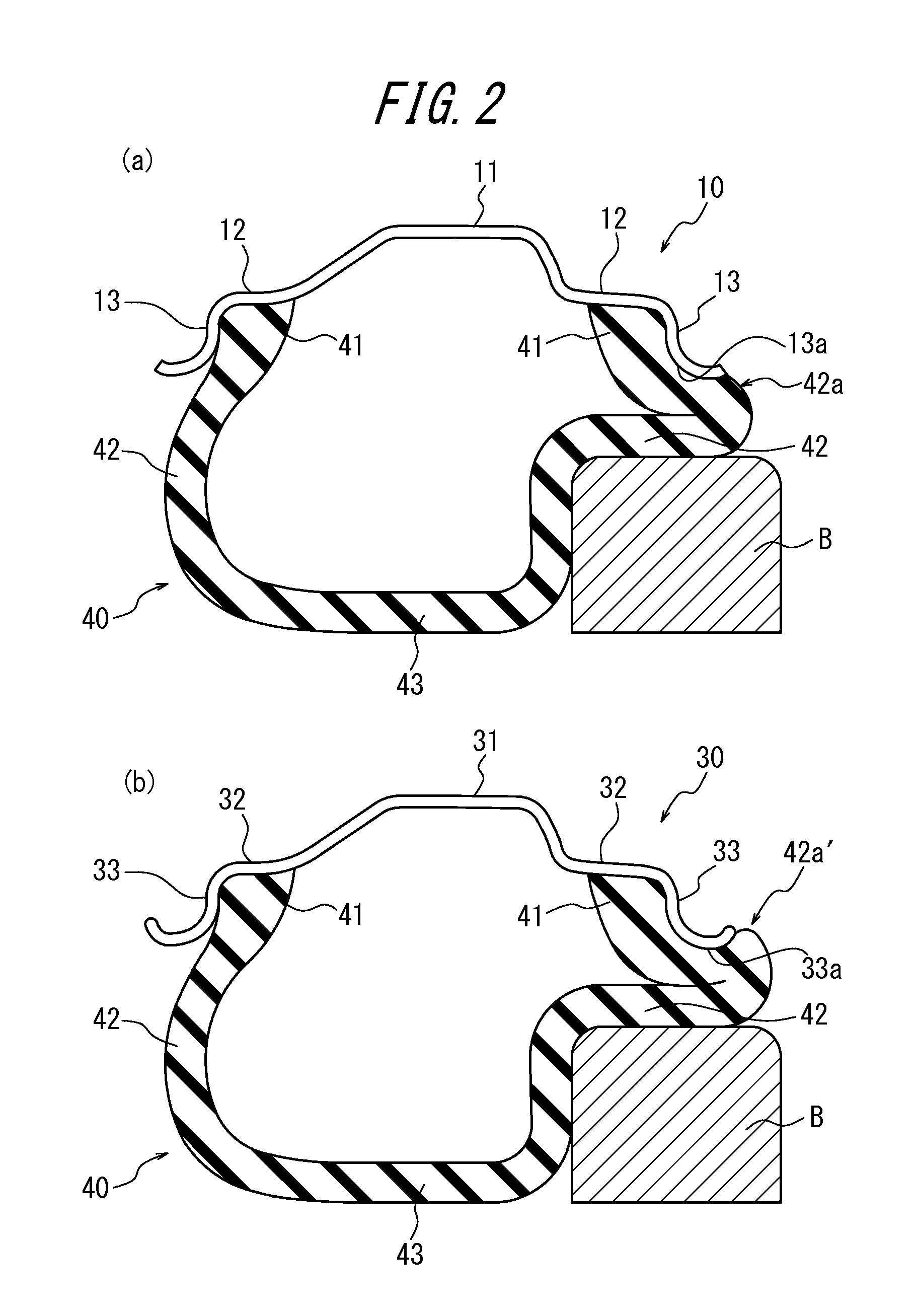Rim for a pneumatic tire
a pneumatic tire and rim technology, applied in the field of rims, can solve the problems of easy cracking of the outer surface of the tire sidewall portion, and achieve the effect of suppressing local deformation of the sidewall portion and suppressing the occurrence of damage to the sidewall portion
- Summary
- Abstract
- Description
- Claims
- Application Information
AI Technical Summary
Benefits of technology
Problems solved by technology
Method used
Image
Examples
example 1
Conventional Example 1
[0034]An FEM model for simulation of a rim for a pneumatic tire having a size of 7.0 J×17, the structure illustrated in FIGS. 3(a) and 3(b), and the specifications listed in Table 1 was created, and the performance thereof was assessed using the method described below. Table 1 lists the results of assessment.
example 8
[0036]An FEM model for simulation of a rim for a pneumatic tire was created to be the same as Example 5, except that the rim thickness was decreased gradually from the width direction center to the width direction outer end of the rim. Performance was then assessed with the same method as for Example 1. Table 1 lists the results of assessment. Note that the rim thickness was decreased gradually at a rate of 0.04 mm per 1 mm in the rim width direction.
Damage to Sidewall Portion
[0037]FEM models for simulation were created for tires, with a size of 215×45R17, mounted on the produced rims, and simulations were performed by pushing the tires onto a 60 cm high curb under the conditions of 230 kPa air pressure and a 10 kN load. The maximum distortion in the tire radial direction (rim radial direction) of the sidewall portion contacting the flange portion of the rim was calculated and assessed as an index with Conventional Example 1 as 100. In Table 1, a smaller index indicates less local d...
PUM
 Login to View More
Login to View More Abstract
Description
Claims
Application Information
 Login to View More
Login to View More - R&D
- Intellectual Property
- Life Sciences
- Materials
- Tech Scout
- Unparalleled Data Quality
- Higher Quality Content
- 60% Fewer Hallucinations
Browse by: Latest US Patents, China's latest patents, Technical Efficacy Thesaurus, Application Domain, Technology Topic, Popular Technical Reports.
© 2025 PatSnap. All rights reserved.Legal|Privacy policy|Modern Slavery Act Transparency Statement|Sitemap|About US| Contact US: help@patsnap.com



